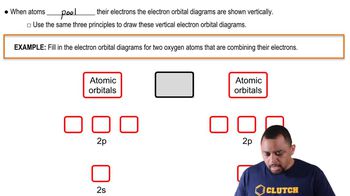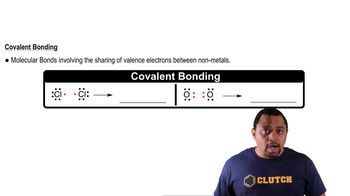Dichloroethylene (C2H2Cl2) has three forms (isomers), each of which is a different substance. (b) Which of these isomers has a zero dipole moment?
Draw sketches illustrating the overlap between the following orbitals on two atoms: (a) the 2s orbital on each atom
 Verified step by step guidance
Verified step by step guidance
Verified video answer for a similar problem:
Key Concepts
Atomic Orbitals

Orbital Overlap

Covalent Bonding

Dichloroethylene (C2H2Cl2) has three forms (isomers), each of which is a different substance. (c) How many isomeric forms can chloroethylene, C2H3Cl, have? Would they be expected to have dipole moments?
Dichlorobenzene, C6H4Cl2, exists in three forms (isomers) called ortho, meta, and para:
Which of these has a nonzero dipole moment?
Draw sketches illustrating the overlap between the following orbitals on two atoms: (b) the 2pz orbital on each atom (assume both atoms are on the z-axis) (c) the 2s orbital on one atom and the 2pz orbital on the other atom.
For each statement, indicate whether it is true or false. (d) Nonbonding electron pairs cannot occupy a hybrid orbital.
Consider the molecule BF3. (c) What hybrid orbitals should be constructed on the B atom to make the B–F bonds in BF3?
